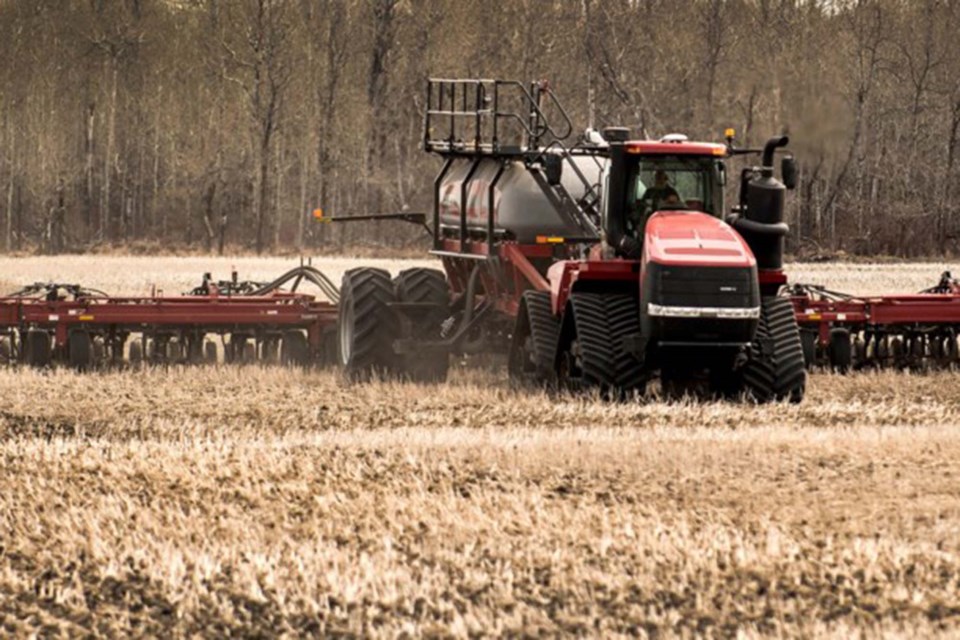Emissions in agriculture have increased by two-thirds in the past 30 years, mostly due to an increase in nitrogen fertilizer production and use, a new report has found.
Most of the other categories of emissions in the industry are staying level, said Darrin Qualman, director of climate crisis policy and action at the National Farmers Union and author of Agricultural Greenhouse Gas Emissions in Canada: A New, Comprehensive Assessment, a report released this month.
“When [we] look at the data, the thing that's driving the overall total upward is a fairly rapid increase in emissions from fertilizer production and use,” Qualman said.
“And that's not surprising. In western provinces we’ve seen a tripling or quadrupling of fertilizer tonnage over the last 30 years.”
The rates of fertilizer per hectare are going up, Qualman said, and there is also more land being farmed overall. Thirty years ago, summer fallow was practiced, where no crop is grown and all plant growth is controlled by cultivation or chemicals during a season when a crop might normally be grown, but Qualman said now every acre, more or less, is cropped every year.
“But also, just the rates of fertilizer that farmers put on an acre of canola or wheat has gone up, so the overall tonnage has gone up,” Qualman said.
Farmers are using more fertilizer because the prime focus of agriculture is to maximize yields, Qualman said, adding federal policy pays close attention to export volumes, and every year there is an expectation to export more than the year before. This focus on maximizing yields and outputs results in increasing inputs, such as fertilizer, which causes an increase in greenhouse-gas emissions.
To help keep emissions lower, the agriculture sector must find a way to optimize fertilizer use rather than maximize it, Qualman said.
“We have to find ways to use this precious nitrogen fertilizer as efficiently as possible,” Qualman said.
“We’ve gone a long time with kind of taking nitrogen fertilizer for granted, and just putting on a little more in the hopes of getting a little larger yield. We need to find ways to use [fertlizer] more efficiently and more carefully.”
Qualman said the industry is already focused on using fertilizer more efficiently, especially because reducing input costs, such as fertilizer, can help maximize profit margins. If you don’t use fertilizer on a crop and it still produces a big yield, you have saved money on the input costs and the net income has gone up.
Overall, fertilizer emissions make up around 30 per cent of greenhouse gases produced in agriculture.
Another contributor in the sector are cattle emissions, which increased from 1990 to 2005, but have since declined, Qualman said.
Some of the reasons the heads got larger was the BSE crisis and market problems with cattle, which caused the size of herds to peak in 2005, but since that peak herd size has been dropping.
As herd sizes drop, so do emissions, Qualman said.
“There have been some efficiency gains in cattle production, but it's largely a function of [the fact that] the number of cattle out there have been coming down,” Qualman said.
While there are opportunities for farms to get more efficient in some areas, Qualman said the industry must be careful to not keep telling them to simply find efficiencies.
“There’s a bit of a caveat, though, because we don't want to just be telling farmers to just get more efficient. Unfortunately, farmers ... especially cattle farmers, have heard that message over and over, whenever prices went down, and it became harder to make a living as a cattle farmer," Qualman said.
Instead, the report seeks to tell both government and farmers to work together to find win-win solutions where emissions can decrease and incomes can increase, Qualman said.
Agriculture emissions make up around 10 per cent of total emissions in Canada.
To bring down that number, Qualman said the nitrogen fertilizer use must drop.
In the 2021 budget, some $200 million was earmarked over three years to help support three programs to bring down emissions, Qualam said.
One initiative is to support better nitrogen management. Another program supports rotational crop grazing, which helps cattle producers install water, supplies, and fencing to manage herds effectively as possible and maximize the productivity of grass and capturing more carbon in the soil.
The final program is support for a cover crop program, which installs a crop on the land when there isn’t a cash crop growing. This helps to maximize the soil carbon gains and catches some of the nitrous oxide emissions that might be lost into the atmosphere as greenhouse gases.



